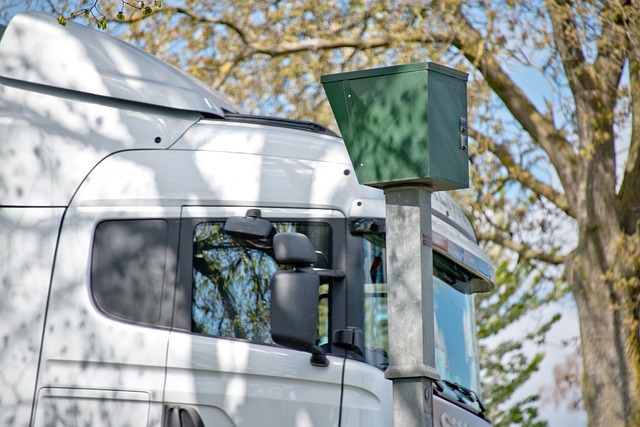Physical damage coverage is an essential component of risk management for owner-operators managing businesses or personal property, protecting assets from unforeseen events like fires, storms, accidents, and vandalism. To achieve long-term resilience in today's unpredictable environment, owner-operators should implement tailored insurance plans addressing not just isolated incidents but also ongoing challenges such as economic downturns, regulatory changes, and supply chain disruptions. Regularly reviewing and adjusting these policies based on evolving risk profiles ensures adequate protection, minimizes financial shocks, and fosters business continuity.
In today’s unpredictable landscape, building long-term resilience is paramount, especially for owner-operators. This article guides you through the essential components of tailored insurance plans designed to enhance sustainability and security. We delve into crucial aspects like understanding comprehensive physical damage coverage for protecting valuable assets, highlighting why owner-operators need robust strategies for enduring challenges. By tailoring insurance plans, you can navigate risks effectively and build a resilient future ready to withstand any storm.
Understanding Physical Damage Coverage: Protecting Your Assets

Physical damage coverage plays a pivotal role in building long-term resilience for both business owners and individual policyholders. This type of insurance is designed to protect assets from unforeseen events, such as fires, storms, accidents, or vandalism. For owner-operators, especially those running small businesses or managing valuable personal property, it’s an essential component of their risk management strategy. By understanding what physical damage coverage entails, individuals can make informed decisions when selecting insurance plans tailored to their needs.
Owner-operators should look for policies that comprehensively cover the replacement or repair of physical assets, including buildings, equipment, and inventory. This ensures that in case of damage or loss, they have the financial backing to restore or replace these assets, minimizing downtime and potential financial strain. A well-tailored insurance plan should also consider specific risks associated with the owner-operator’s industry, location, and lifestyle, offering customized solutions for long-term resilience and peace of mind.
Why Owner-Operators Need Long-Term Resilience Strategies

In today’s unpredictable business landscape, owner-operators cannot afford short-sighted risk management strategies. While immediate needs like physical damage coverage from unexpected events are essential, long-term resilience requires a broader approach. Owner-operators need to prepare for not just isolated incidents but potential ongoing challenges that could disrupt their operations and impact their financial stability over time. By implementing tailored insurance plans that go beyond basic coverage, owner-operators can build a buffer against economic downturns, regulatory changes, and other uncertain factors that may arise in the future.
This proactive approach ensures that when faced with unforeseen circumstances, be it natural disasters, market fluctuations or supply chain disruptions, owner-operators have the financial resilience to adapt, recover, and continue thriving. Investing in comprehensive risk management strategies, including customized insurance solutions, is a crucial step toward securing their operations’ longevity and prosperity.
Tailoring Insurance Plans for Sustainable Security

In today’s unpredictable world, building long-term resilience requires more than just having a basic insurance plan. Tailoring insurance plans to fit specific needs is crucial for sustainable security. For owner-operators, this means going beyond standard coverage and focusing on comprehensive protection against potential risks, including physical damage to their assets. By assessing their unique operational landscapes, they can create customized policies that address specific vulnerabilities and ensure business continuity.
This personalized approach allows them to manage risks effectively, from natural disasters to accidents or equipment malfunctions. For instance, a tailored insurance plan might include enhanced coverage for specialized equipment, liability protection against third-party damages, and even financial support during periods of temporary operation disruption. Such proactive measures empower owner-operators to navigate challenges with confidence, knowing they have the resilience to bounce back swiftly.
Implementing and Reviewing: Building a Resilient Future

Implementing and reviewing tailored insurance plans is a proactive step towards building long-term resilience for both individuals and businesses. By regularly assessing risk profiles, owners can ensure their coverage aligns with evolving needs. This process involves scrutinizing aspects like physical damage coverage, especially relevant for owner-operators managing assets susceptible to environmental hazards or accidents. Staying agile in risk management allows for swift adjustments to policies, ensuring adequate protection against potential threats.
Regular reviews also enable owners to incorporate new insights and changes in their operations into insurance strategies. This forward-thinking approach fosters a resilient future by minimizing financial shocks and disruptions, ultimately safeguarding assets and enabling better preparedness for unforeseen circumstances.
Building long-term resilience through tailored insurance plans is crucial for both physical damage coverage and ensuring the sustainability of owner-operators’ businesses. By understanding their assets and implementing robust strategies, owner-operators can navigate uncertainties with confidence. Tailoring insurance to specific needs fosters a resilient future, offering peace of mind and financial security in an ever-changing landscape. This proactive approach empowers individuals to protect what matters most, be it property or enterprise, against unforeseen events.
